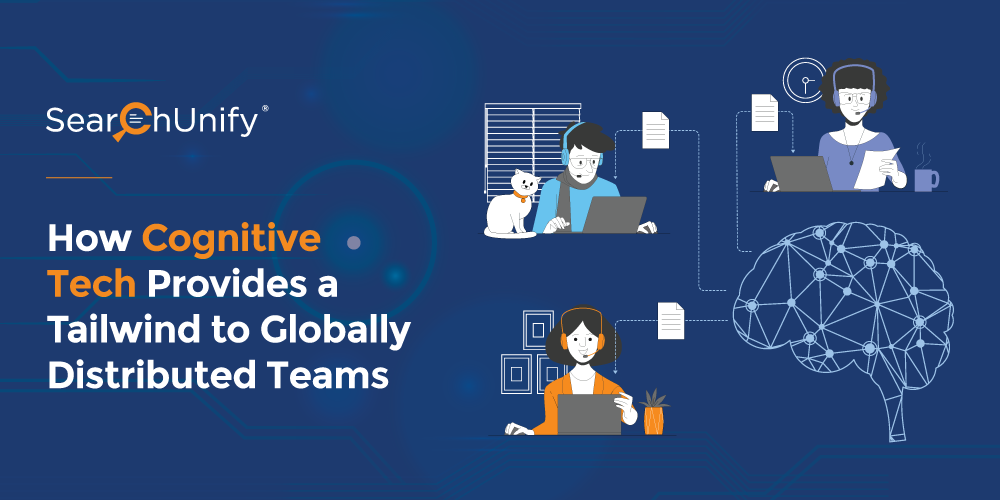
Imagine a situation where your team has to deploy software in multiple workstations for a large organization. If the standardized processes are in place, adequate tools are provided, and each team member is well-trained, the job will be carried out flawlessly and lead to happy customers, more profits, and, hence, successful business. Such a utopian state is within reach by aligning the ‘golden triangle’ – people, process, and technology – that drives operational efficiency.
Achieving operational efficiency is an indispensable part of any business. Still, it remains unattainable by many. To make matters worse, the pandemic broke out and the massive disruption showed how unprepared businesses were to face abrupt changes. It forced them to rethink the strategies related to work, workforce, and workplace.
Dig in to learn about the challenges that hatched with disruption of work models and distributed workforce; and how NETSCOUT is overcoming them like a pro.
Workplace Revolution & the Rise of Distributed Teams
The massive shift in workplace revolution stirred up a whole horde of challenges that hinder remote work productivity and bottleneck distributed operations. Let’s understand the most common challenges:
1. Disrupted Communication & Limited Collaboration
As per a Gartner survey, a majority of the service employees are collaborating less frequently since transitioning to WFH.
Relying on virtual collaboration carries lingering concerns around lack of engagement, miscommunication, misunderstanding, and much more. In a face-to-face setting, the room for error is a lot less as you understand your colleagues through body language and gestures. In other words, virtual collaboration lacks the personal touch of ‘being there.’
2. Workplace Disputes with Time Zone Difference
Remote working allows enterprises to hire diverse talent around the globe, with no boundaries. However, this brings out the challenge of collaborating with a team across multiple time zones. This hampers communication and collaboration and creates friction in the workplace.
3. Inefficient Technology & Remote Network Access
From shoddy software to digital access failures, employers are facing the brunt of poor productivity, and unsystematic working. These little irritants also force many employees to put in extra hours to complete the task. In other words, with inadequate technology in place, the trouble for employers and employees manyfolds.
Challenges Faced by NETSCOUT
NETSCOUT is a leading provider of business assurance – a powerful combination of service assurance, cybersecurity, and business intelligence solutions – for today’s most demanding service providers, enterprises, and government networks.
The company started working in distributed teams globally before the pandemic hastened the rise in remote working. So, they were already figuring out ways to remove the stumbling blocks and work efficiently. However, when the crisis started unspooling, their support team was confronted with many additional layers of complexity. Some are as follows:
1. Ineffectiveness of Tiered Model
NETSCOUT primarily focused on a product-based model where their support engineers’ expertise was in supporting break/fix of the products. They were also working with NETSCOUT’s products that are connected with other vendors’ products. With an all-new set of roadblocks, the tiered model was rendered obsolete. It was trapping agents into the vicious circle of duplicate work, i.e., the repetition of support efforts, resulting in agent burnout and customer dissatisfaction.
2. Searching Across Multiple Information Sources
Remote working leads to limited communication with the team due to time zone differences. NETSCOUT’s team encountered a similar problem that forced them to use e-mails for storing and sharing information excessively.
But it was found that most of the solutions were lost in e-mails. Their teams were having a hard time finding relevant solutions, leading them to run searches across various information sources. This led to duplicate work, low team morale, conflicts, and low productivity.
However, NETSCOUT decided to fight back and fix the fractures within the work model to prevent the cracks from widening. In today’s world, intelligent and dynamic applications of AI in the form of cognitive technology are proving to be a big helping hand. And NETSCOUT decided to take it.
Wondering how NETSCOUT Outmaneuvered The Barriers?
Tune into this webinar and hear Kristin Whitaker on how NETSCOUT is circumventing the employee engagement crisis by improving knowledge creation, findability, and support outcomes.

















